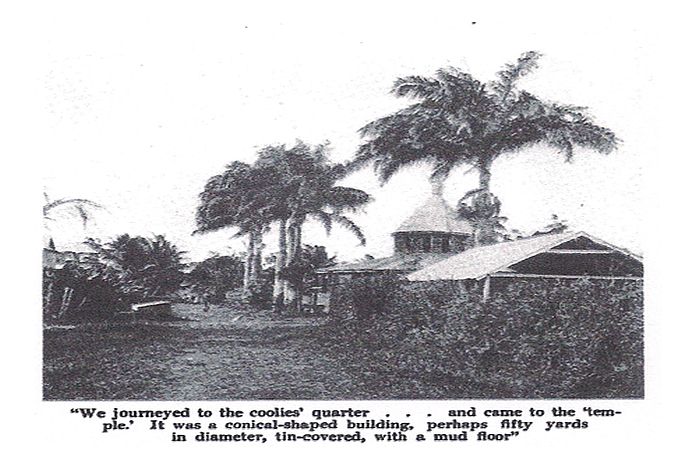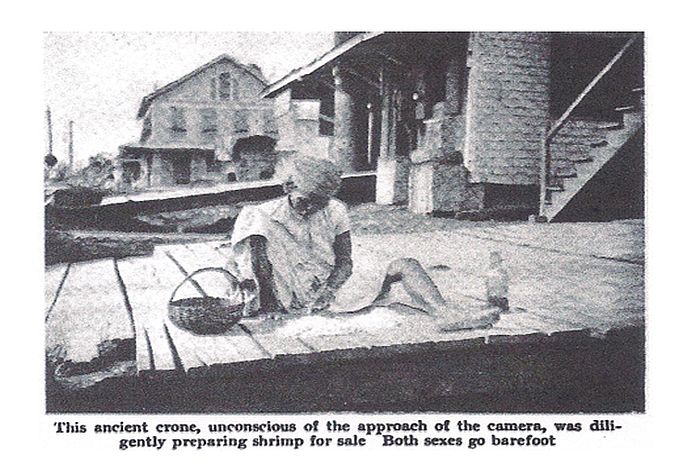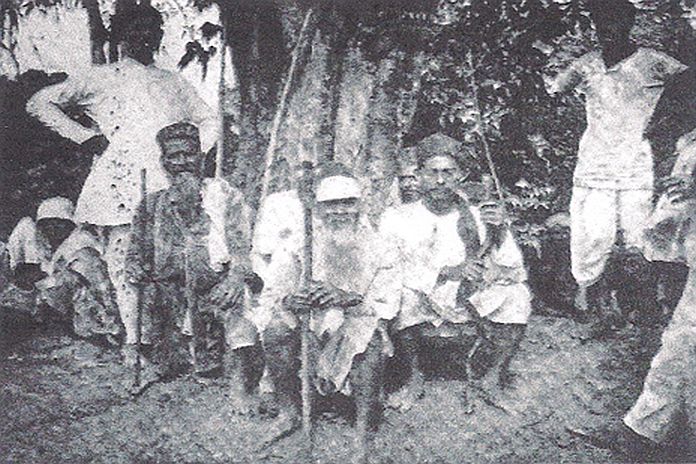By Ray Chickrie
GEORGETOWN, Guyana – On May 5, Guyana celebrated “Arrival Day,” which is an appropriate time to reflect on ”Coolie indentureship.” It was a turbulent period and experience which continues to haunt the present generation. The triumphs, tribulations, and trauma continue to affect the diaspora. And I will make my observations and arguments around an article published in May 1919 by William J. La Varro in a Travel magazine by J. B. Lippincott Company, Philadelphia.
The article titled, “The Shree-Mat-Bhag-What Ceremony,” was published in May 1919, two years after the end of Hindustani indentureship in former British Guiana. After reading it, I quickly recalled Dr Edward Said’s book “Orientalism.” Harvard Educated William J. La Varre seemed to have used most of this time in the colony to observe the Hindustani community of British Guiana. He correctly states that the Hindustanis began arriving in the colony in 1838, four years after the abolition of slavery in the British Empire in 1834 to “another form of slavery,” in his words.
Dr Said in his book, “Orientalism” concluded that European have a misunderstanding of the East (orient) and these are powerful people writing about powerless people. “European fantasy about the Orient … created a body of theory and practice in which, for many generations, there has been a considerable material investment,” he said. Orientalism in Said’s description is a discourse of the powerful about the powerless, an expression of “power-knowledge” that is at the same time an expression of narcissism (Adam Shatz). And it holds true in reviewing La Varre’s literature on the Hindus and “Muhammadians,” as he referred to the Muslims. It’s a label Muslims, followers of Islam, in Guyana have fought until the 1960s to put an end to.
The subheading of the article, the beginning of the story reads, “weird and picturesque Mohammedan celebration in British Guiana, a center of large Hindu and Mohammedan settlement – strange occidental intermixing of the two oriental religions in the little transplanted India,” sets the tone of a self-serving, civilizing paternalism that dates back to the Whiteman’s Burden in which was used to justify slavery and Indenturedship. He seems to enjoy watching the misery from his world. This narrative brought to light the misery and wretchedness of first and second-generation Hindustanis living in “bound yard.”

La Varre arrived in British Guyana, “freeing himself from mud bars and to the “braying of a mule, who gave us the Hee Haw.” Then he met a “lanky and thirsty negro” looking for baksheesh. He and his cameraman took pictures of the most wretched in society, the poor, homeless beggars, and Sanddhus (religious ascetic,). He met a woman he referred to as a “scare-crow, He said, “that even the cleanest among them being exceedingly dirty and all clamoring for alms as if an American were both by nature-rich and soft of heart.” Indeed indentureship was brutal and oppressive, but he never questioned who was responsible for this misery. And why did he not capture positive images of the “wretched and docile”. He talked about Indians running barefooted and did question the many years of working the sugar and rice fields that led to cracked fingers and feet. He described their “strange and weird ” bright colours they wore, but he did not capture those colours under the midday sun of the tropics harvesting sugar cane and planting rice in deep mud and water. He goes there to capture the weirdest pictures to show his world of Hindustanis in his circus.
He was shocked that in “the tropics one naturally expects to find the negroes predominant in numbers, they were abundant but the greater population composed of East Indians and Chinese coolies dress in their native dress.” I guess he learned something there. Indonesia, Malaysia, and India don’t fall in the tropics?
La Varee noticed that “both sexes were barefooted and men wore turbans. The turbans seem the dirtiest of all.” There were men with heads shaved and with a “pigtail on top.” He is referring to a Hindu practice that has significant meaning but he was ignorant of this. Men also wore “parallel streaks of bright colored “paint” on their foreheads.” He discovered that they were “worshippers of Shiva.”

He described Hindustani women as “ animated jewelry stores loaded as they were with all their wealth- amulets, anklets, bracelets, earrings, necklaces, nose studs, and rings. Usually, dressed in gay colored garments.” These are common practices in Africa, Asia, and India.
Interestingly, in all this dirty and filth, he took note that “the younger women were remarkably pretty, with clear-cut aquiline (European) features, and white even teeth.
His observation of Hindu/Muslim communal relationship give us an accurate picture of the period. La Varre noted that the “East Indians differ widely in religion- the great proportion being Hindus. Next in numbers come the Mohammedans, followed by a variety of less important cults.”
After the end of slavery, he said there was a major labour shortage in the colony. But, “the problem was solved by the system of indentures, whereby East Indians signed papers agreeing to work for a certain period of time.” “In return, they were paid a small daily wage, food, shelter and passage to Guyana. “They were brought over by the thousands in ill-smelling ships without proper accommodation or sanitation, and many of them died before reaching land. In the beginning they were ill-treated and often committed suicide to escape the miseries of their lives.”
He saw their conditions in 1919 as “still practically slaves, working day in and day out for a period.” Around the plantations he saw East Indians “quartered in little villages; sometimes they live in small houses built on poles, and sometimes in long sheds subdivided into rude stall (former slave housing), similar but far inferior to anything in which we would be willing to stable our animals.” Every poor Hindustanis up until the 1980s lived in mud and grass houses in Guyana.
A vivid image now emerges of conditions in those logiest. ”On old rice sacks or in dirty hammocks they sleep; their food consisting chiefly of rice and cassava, with, once in a while, plain boiled plantain to relieve the great monotony of diet.”
La Varre confirmed that Hindus were already having elaborate religious observations for multiple days. He noted that “Hindus begin their religious ceremony; a prayer for the harvest, or Shree -mat- bhag-what” as it is called at midnight in the Coolie quarter.” The “conical-shaped “temple and the entire preparation was elaborate. Women and men were segregated in the congregation- “men on one side and women on the other, separated by a rope.” The Pandit and his assistant is seated on a “raised platform”; seated cross-legged and read in sing-song chant from the Hindu book. Like today still, he saw “Hindu musicians (Kirtan) seated in a circle in the front of the pulpit.”
While Hindus and Muslims “at home do not agree on the subjects of religion and food, they seem in perfect harmony concerning matters of food and feasts in British Guiana.” Unlike in India where people are “so tenacious of caste and religious difference at home, strangely foregather in this far country where differences seem less and their bonds seem greater.” He noted that Hindustanis attended each other’s religious celebration and he was “informed that it is quite the thing here for Hindus to visit Mohammedian ceremony and although not taking part in the devotion, eat freely at the feast, and similarly for the Mohammedans to visit the Hindu ceremonies.”
Thus, by 1919 there was a rich cultural life in the colony; mosques and temples were part of the landscape but Indians remained uneducated, lived in poverty and misery of rape, domestic violence, alcoholism; self-worth, and depression. Older immigrants long India. “One man told the writer, he would prefer to die in this native land.” On the other hand, a Youngman wanted to know more about the United States and Columbia University. Yet, he was “afraid of the possibility of the existence of race prejudice” in the United States.
The reality of the two worlds that La Varre captured – “It is ever that way down there – old men wanting to return to India- young men desiring an education in the United States- none of them ever having an opportunity to obtain their desires. It was quite pathetic to hear them tell of their longings. The old man became tearful when talking of India whence it seemed they must have been almost forcibly taken and to which they probably would never be returned.
And the misery will continue in the next generation he observed. “Even young children, born in the colony, seemed unhappy. I do not remember seeing a happy-face child; in them, there is born that longing which seems ever-present in their parents.” The miseries of indentureship and its inflicting traumas continue to affect the diaspora today.





